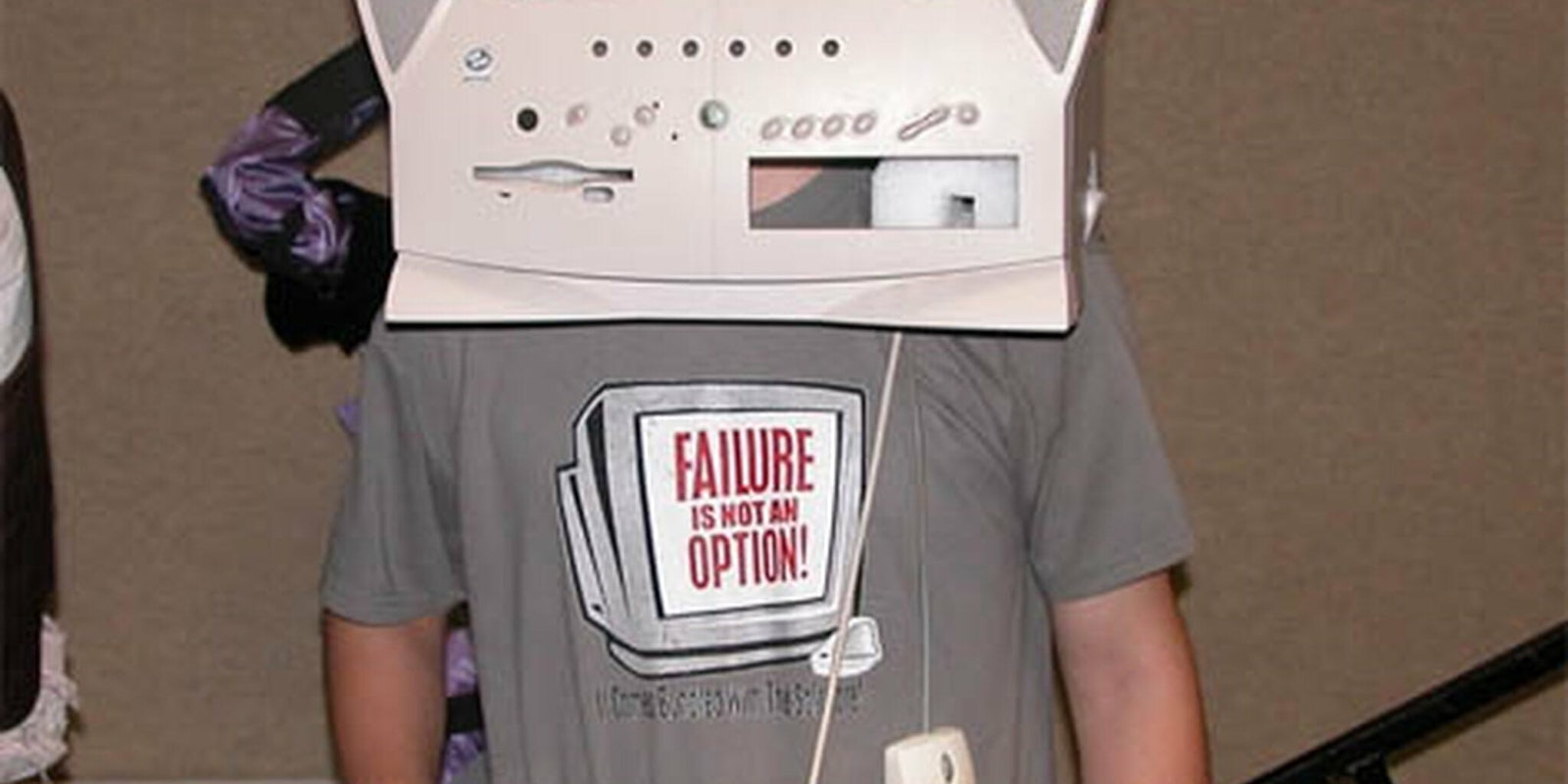As a wise ladyboy once said, “We are born naked; everything else is drag.”
We’re approaching Halloween, that holiday of disguise and trickery, when we expose the joke of identity.
How are the masks we put on every day—the ones we wear as we work and play—any different from the outfits we elaborately assemble once a year? Both are constructed identities.
Not everyone’s in on the gag, however, like the humor-impaired Students Teaching Against Racism (STARS). The Ohio University group created a series of posters with the slogan “We’re a culture, not a costume,” pointing out racial stereotypes in Halloween outfits. They drew predictable parodies, from dogs to Daleks.
What both the STARS and their parodists missed is that culture is costume, and costume is culture. (I bet they have some handy courses in anthropology at OU.)
…
And on the Web, we live in a costume culture. Without our born-naked bodies, we are nothing but drag—an elaborate put-on, meant to tell a story about ourselves.
Whether that story has anything to do with our real selves is another matter. As I wrote in 2009:
That’s the grand irony of Twitter: Even the real people on the service are fake. They are their own simulacra. No one actually lives their life 140 characters at a time. What we do is turn ourselves into works of fiction. Who’s real? Who’s not? Who cares?
So what does it matter if we play dress-up? We have to put something on anyway—might as well make it something people notice.
…
The problem comes when someone else tries to put a costume on you, like the apparent attempt to make Occupy Wall Street protesters look like potheads.
Or Jill Filipovic, whose run-in with a TSA agent impressed by the vibrator in her luggage has turned her into a hero to freak-flag fliers rather than a spokesperson for privacy rights.
Even performers, for whom costume is a professional obligation, sometimes want to strip away the elaborate artifice.
In an interview with the Daily Dot, Kreayshawn, the Oakland-based rapper and performance artist, said, “I wish I could live in an 8-bit world.”
There’s something clarifying about keeping it low-resolution.
…
We live in an age of high-def and 3D. We keep demanding more reality from our virtual screens. We’ve seen a lot of ‘shops in our time, and we can tell from the pixels. But perhaps we need to be more embracing of artifice, of presentation as representation.
It’s just a costume.
Boo!


